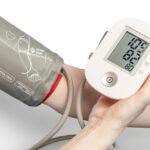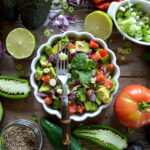Your Questions Answered
This month GI News welcomes back dietitian and nutritionist Catherine Saxelby to answer your questions about healthy living, food and nutrition.
The fundraising chocolate bar makes my blood boil! Do you have any suggestions for alternatives that parents like me will be happier selling to our friends?
Fundraising chocolate isn’t the Win/Win situation the chocolate companies would have you believe. It’s actually a win for them but a no-win for your family’s health. Chocolate has long been an easy vehicle for fundraising because it keeps for weeks without refrigeration, it’s easy to carry, and everyone loves a treat. I have to confess that all too often we end up buying the whole box and just paying the school the money! Here are five win/win fundraisers that I have found. I am sure you’ll be much happier asking your friends to buy these practical products.
![[MONEY]](https://glycemicindex.com/blog/2008/april08/donate175.jpg)
- Small 100 g tubes or roll-ons of SPF30+ sunblock. Keeps well and every family always needs more! The local pharmacy may be happy to help organise this with your school.
- An Apple Spiral or Slinky machine is an easy, healthy alternative. It cores, slices and peels an apple into apple spirals or slinkies that kids love. Google ‘apple spiral or slinky’ for brands and contact details.
- This one is good for you and good for the planet. Instead of buying bottled water when you are out and about, take your own filtered water bottle. The one I know about is Brita’s sport bottle. But there are others on the market. Just Google ‘filtered portable water bottles’.
- Consider making inroads into your school’s lost property by fundraising with easy, fun iron on clothing and name labels. The school or the P&C circulates an order form from a label making company and takes orders and money. The goods get delivered to the school which receives a 20% donation from the supplier which is what a retailer would normally take. Google ‘iron on clothing and name labels’ for brands and contact details.
- Fresh produce – a bit like having a farmers’ market at school. Invite the local fresh produce market or shop to supply mangoes, watermelon, corn cobs or other fresh product on a set day – depending what’s in season. The school advertises it as “Magic Mango Day” or similar and the kids go home with something fresh for the family to eat at a good price.
If you have some bright ideas for school fundraisers that are healthy and practical, we would love to hear from you. Just post your suggestions below.
I was interested in your comments on salt last month. I have heard that the Australian soil is devoid of iodine. Is this true?
Yes, the soil in some parts of Australia has low levels of some minerals, especially the trace minerals iodine and selenium. Tasmania and the ACT for example have low levels of iodine as do many parts of New Zealand which means that foods grown in these soils will be deficient. Iodine prevents goitre and promotes normal functioning of the thyroid gland. It also aids brain function. And although we only need a teaspoon for an entire lifetime, lack of iodine is a major problem in many parts of the world and it’s now thought that iodine intake levels in Australia have dropped. Your best sources of iodine are readily available — fish and iodised salt. In fact, eating fish once a week should give you all the iodine you need.
![[SALMON]](https://glycemicindex.com/blog/2008/april08/salmon225.jpg)
‘What is the latest research on low GI carbs and those who exercise moderately (around 60 minutes, mod intensity) and those who exercise at a higher intensity. Information on pre and post exercise carbs (as per a fitness course I’m currently undertaking) appears to conflict with general advice on good nutrition, advocating high GI foods.
Dr Emma Stevenson who is an expert in these things says: ‘Our research has continually showed that consuming low GI carbs in the hours before exercise can increase the rate at which you burn fat during exercise and also will help to maintain a more sustained blood glucose level. Eating a meal or snack containing LGI carbs 2–4 hours before exercise is what’s usually recommended. The type of carbohydrates that you consume during recovery from exercise depends on the length of time before your next training session. If your recovery time is more than 4 hours then it doesn’t matter what type of carbohydrate you eat or drink as long as you consume enough of it! If recovery time is short, then HGI carbs are useful to replace muscle glycogen concentrations quickly and efficiently. However, research has shown that consuming low GI carbs over a 24-hour recovery period can improve endurance capacity the next day.’
![[EXERCISE]](https://glycemicindex.com/blog/2008/april08/swimmer225.jpg)
Following your piece on the benefits of beans (particularly soybeans), do you have a selection of recipes which includes these beans? And how much is a high intake?
The cookbooks by Prof Jennie Brand-Miller and her team all have lots of legume recipes, including a few with soybeans and miso. Some titles to check out are The Low GI Diet Cookbook, The Low GI Vegetarian Cookbook, Low GI Gluten-free Living and The Low GI Family Cookbook. As you will see this month our food of the month is miso (fermented soybeans) and Kate has a recipe using it too. Asian and vegetarian cookbooks are the best place to find recipes using soybeans, but we will keep your request in mind. If you would like to snack on roasted soy nuts, check out the recipe in the January 2007 issue of GI News (just pop the recipe name in the Google search bar in the right-hand column). What’s a high intake of legumes? Well the women in the study who were consuming the most legumes were eating around 65 g (2 1/2 oz) legumes a day (including soybeans) and a high daily intake of soybeans was 32 g (a bit over 1 oz). The women also ate around 3 g a day peanuts (yes, they are legumes too). It’s very achievable as these aren’t huge amounts at all. To help you get started, here are some tips to boost your intake.
- Serve home-cooked or canned red kidney beans with tacos, burritos, pasta or rice.
- Chickpeas go well with curries and stir-fries.
- Make some dahl with lentils or split peas to serve with a curry.
- Add home-cooked or canned cannellini, borlotti, butter or black-eyed beans to soups, stews and salads.
- Snack on roasted soy nuts. Just a small handful.
![[SOY]](https://glycemicindex.com/blog/2008/april08/soy225.jpg)







